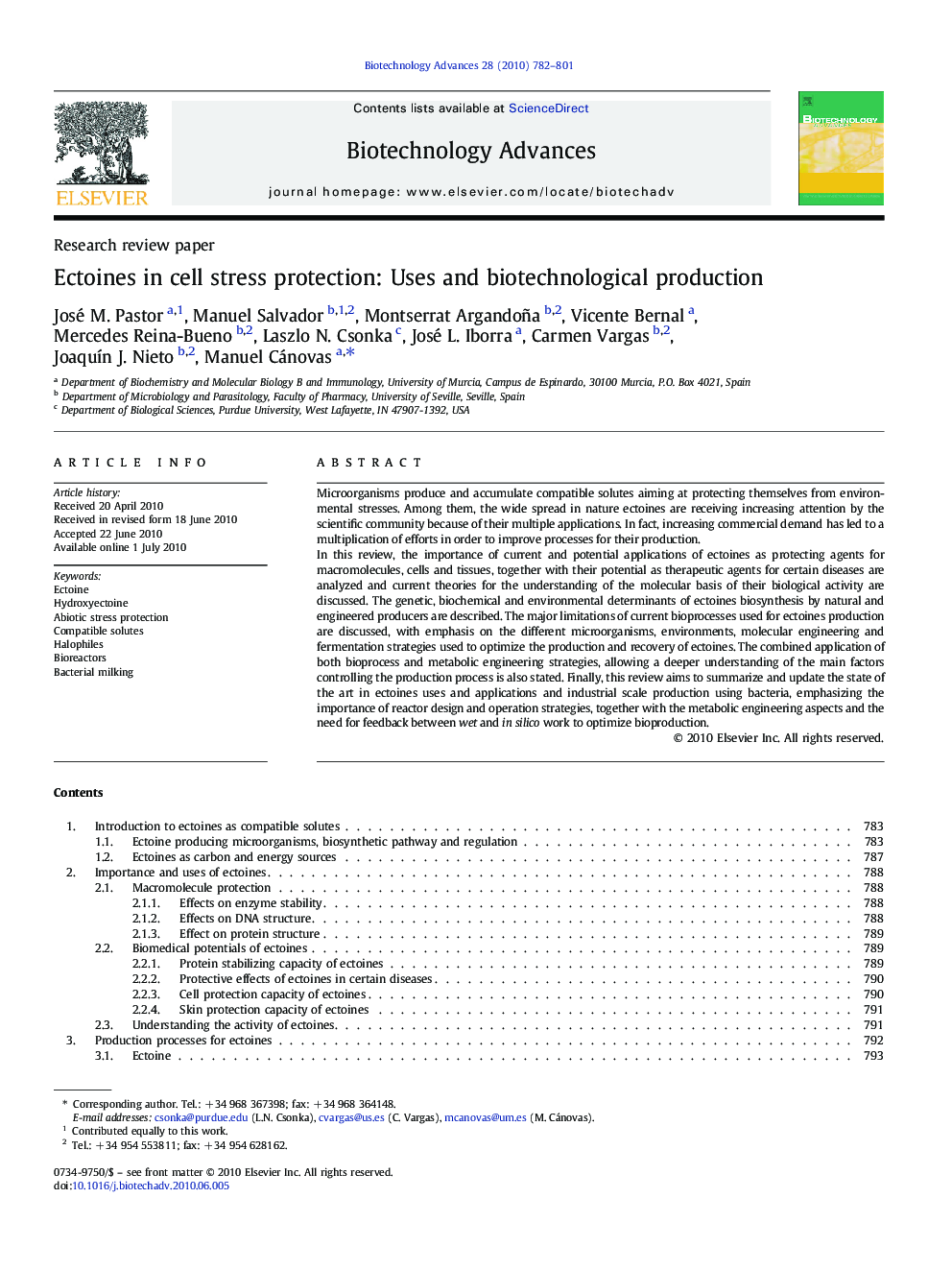| Article ID | Journal | Published Year | Pages | File Type |
|---|---|---|---|---|
| 14425 | Biotechnology Advances | 2010 | 20 Pages |
Microorganisms produce and accumulate compatible solutes aiming at protecting themselves from environmental stresses. Among them, the wide spread in nature ectoines are receiving increasing attention by the scientific community because of their multiple applications. In fact, increasing commercial demand has led to a multiplication of efforts in order to improve processes for their production.In this review, the importance of current and potential applications of ectoines as protecting agents for macromolecules, cells and tissues, together with their potential as therapeutic agents for certain diseases are analyzed and current theories for the understanding of the molecular basis of their biological activity are discussed. The genetic, biochemical and environmental determinants of ectoines biosynthesis by natural and engineered producers are described. The major limitations of current bioprocesses used for ectoines production are discussed, with emphasis on the different microorganisms, environments, molecular engineering and fermentation strategies used to optimize the production and recovery of ectoines. The combined application of both bioprocess and metabolic engineering strategies, allowing a deeper understanding of the main factors controlling the production process is also stated. Finally, this review aims to summarize and update the state of the art in ectoines uses and applications and industrial scale production using bacteria, emphasizing the importance of reactor design and operation strategies, together with the metabolic engineering aspects and the need for feedback between wet and in silico work to optimize bioproduction.
